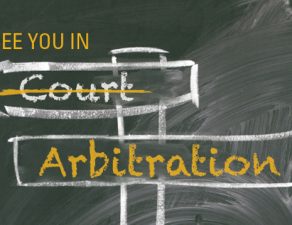
Hearings are of course traditionally part of the ADR process and can be beneficial where live testimony is needed. However, many cases can be resolved with documentary evidence, such as contracts, police or accident reports, witness statements, photographs, estimates or receipts, and video or audio recordings. One of the disadvantages of traditional brick and mortar ADR is that not only are hearings required, but they are generally in-person, regardless of whether they offer any benefits to the parties.
Advantages of Using an Online Platform
Online ADR offers parties convenience and cost-savings. For instance, with ARS’ online platform, hearings are optional.[1]However, any party may request a telephonic or video conferenced hearing. If such a hearing is requested, the Arbitrator will render a decision after the hearing. If no telephonic hearing is requested a decision will be made based on the Application and Response(s) along with the evidence that has been submitted.
When the parties opt for a hearing, the benefit of an online platform is that hearings are scheduled for the convenience of the participants. It’s much easier to find a time when everyone is available. There is no need for travel; no waiting around in airports and spending time in hotels. In addition, it is simpler to arrange testimony of necessary witnesses, including eliminating some of the legal challenges to obtaining non-party witness testimony for an out of town hearing.
The process for scheduling is also simplified. Where any party requests either a telephonic or video conferenced hearing, ARS provides all parties with a brief online questionnaire allowing them to state days of the week and times which they prefer for hearings. This facilitates the process for selecting days and times which are convenient for all parties and eliminates numerous back and forth emails among the parties.
What Happens in a Hearing with Online ADR
After introductions are made, the Arbitrator (who will have already reviewed the file containing each party’s side of the matter) will start by giving his/her initial thoughts as to what he/she believes to be the facts. If needed, the Arbitrator will ask questions of the parties, so he/she can understand the facts more clearly. Then the Applicant and Respondent(s) will have the chance to explain why each believes their view of the dispute is correct. After the parties are finished, the Arbitrator will give the parties the chance to discuss the dispute between themselves for a few minutes to see if they can settle the claim. If they can’t, the Arbitrator will then end the hearing. Within sixty (60) days the Arbitrator will render a decision and the parties are notified.
When traditional brick and mortar ADR providers conduct hearings, the process often adds time and expense to the cost of ADR without looking at whether it benefits the parties. In a fully online environment, the parties have the option to proceed without a hearing and if they do want a hearing, it is a much more convenient and less costly option. ARS provides the only Complete Online ADR (C-ODR) solution. To learn more about how online ADR works, visit ARS’ FAQ page orcontact us for a consultation.
[1]And at least one court has held that there is no right to an in-person hearing. See State Farm Guaranty Insurance Co. v. Hereford Insurance Co., No. A-3749-16T3 (N.J. App. Div. Mar. 14, 2018): “If a hearing is allowed, nothing in the Act prohibits the hearing from being conducted telephonically. In addition, nothing in the Act requires that the hearing be at a physical location.”





